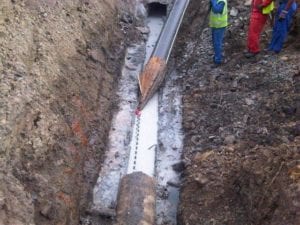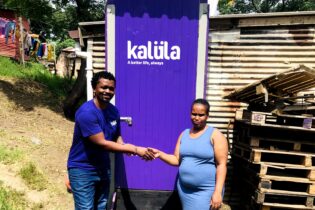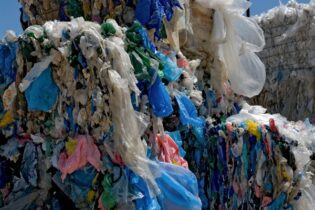Subsurface pipeline construction and rehabilitation company Trenchless Technologies’ involvement in the replacement of 414 metres of sewer pipeline at the Isithebe Industrial Estate in the iLembe District Municipality of KwaZulu-Natal saw Trenchless Technologies save the client R0.47 million through the use of pipe bursting – a trenchless technology that is popular in the replacement of sewer, water and natural gas pipelines.
Trenchless Technologies managing member Sam Efrat explains that the existing 400 nominal bore (NB) concrete sewer pipeline with 4 mm wire reinforcement that served the Isithebe Industrial Estate experienced constant blockages to the point whereby the pipe could no longer be maintained and the blockages removed. Trenchless Technologies GM Marco Camarda says that they also suspected that there was severe corrosion of the pipe invert caused by acidic effluent. “We feared that there were numerous pipe collapses, which would have caused severe ‘silting up’ of the pipe. No pre-assessment by CCTV inspection could be undertaken as it was not possible to clear the blockages and get access through the pipeline. Instead, we inspected the pipe from each manhole both upstream and downsteam. We recorded with photos and based on this information we ascertained that the reinforced concrete pipe was highly corroded ,” explains Camarda. When the project was initially put out to tender it called for the open-cut replacement of the existing 400 NB concrete sewer pipe in the same position at depths varying between 4 m – 8 m. Although the site is open and there is no infrastructure affected by the open-cut works, the large volume of material needed to be excavated and backfilled created an opportunity to offer a potentially more economic trenchless alternative. “When tenders were presented, the open-cut method was priced at R2,45-million, while the trenchless alternative was priced at R1.81-million (excluding VAT and contingencies) – a saving of more than R0.47-million,” explains Camarda. According to the tender information the existing pipe at the estate comprised a 400 NB Asbestos Cement (AC) pipe. The trenchless alternative presented was based on utilising pipe reaming with a Horizontal Directional Drill (HDD) rig (Terra-Jet 7520) to ream out this 400 NB AC pipe and replace it with a 450 PE 100 PN 10 HDPE pipe. Lengths of 100 m to 200 m were anticipated to be achievable. However upon being awarded the contract and establishment on site, provisional investigations performed by Trenchless Technologies revealed that the pipe was in fact a 400 NB concrete pipe with 4mm wire reinforcing. “We considered it unfeasible to undertake the pipe reaming as it was feared that the reinforcing would wrap around the back-reamer, causing it to get stuck,” explains Camarda.Additionally it was found that the existing pipe had been laid on concrete haunching. This was considered to be partially beneficial in that it would likely maintain the level of the pipe to be burst. It was also considered to be non-beneficial in that displacement would take place only upwards and sideways as it was unlikely that the solid concrete base would displace to any extent downwards – as such, to be successful, a powerful displacement methodology would have to be employed.
Consequently conventional displacement pipe-bursting using a combination of a Terra TR 360 hammer (dynamic pipe-bursting) housed within a 450 HDPE bursting casing, in conjunction with a 60 ton chain puller (static pipe bursting) would be utilised. The Terra TR 360 hammer has a ramming force of 840 tonnes and this would provide the main bursting force. Bursting lengths of 50 m – 100 m were considered feasible. “A special pipe bursting casing was fabricated with a single sharpened tungsten coated blade to cut through the concrete pipe and split the wire at a single point and allow the concrete pipe to crumble and open up around the pipe bursting casing,” explains Camarda. The final cost of the displacement pipe bursting was R1.98-million compared to the initially tendered R1,81-million for the HDD pipe reaming, a little more expensive as a result of more launch pits being required for the shorter 50 m to 100 m bursting lengths achievable, compared to 100 m to 200 m lengths anticipated by the HDD reaming method. A total amount of 882 m3 of excavation and 80 m2 of shoring was required using pipe bursting compared to 15 188 m3 of excavation and 1 239 square metres of shoring by open cut. The impact on the environment using bursting was thus only 6% of the footprint required for the open-cut resulting in far lower carbon emissions as well as managing not to destroy any trees on the project. Overall Camarda and Efrat both agree that despite initial challenges, the project was a success with a cost saving of more than 19.2%, thanks to the utilisation of the bursting method compared to the open cut method at R 2.45 million.







